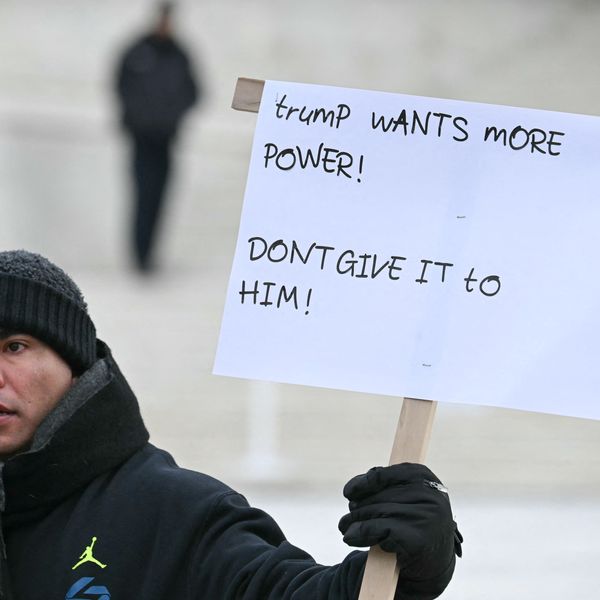
The Radical Right-Wing Court Has Destroyed a Crucial Judicial Guardrail
Now that the court has obliterated the distinction of what constitutes legal standing, there are no limits to what this least democratic branch of government — and its extremist majority — might do.
One ruling hidden inside one of the Supreme Court’s horrendous decisions last week hasn’t got nearly the attention it deserves: the court’s radical expansion of who has standing to bring cases before the court.
But on Friday, in Biden v. Nebraska — striking down President Biden’s student loan program — the majority decided that Missouri had standing to challenge the program. Why? Because a quasi-independent state agency — the Missouri Higher Education Loan Authority (MOHELA) — might suffer financial losses from the loan program. As Chief Justice John Roberts wrote for the majority:
“The … plan harms MOHELA in the performance of its public function and so directly harms the State that created and controls MOHELA. Missouri thus has suffered an injury in fact sufficient to give it standing to challenge the Secretary’s plan.”
Directly harms the state? Hello?
As Justice Elena Kagan wrote in her dissent, “In adjudicating Missouri’s claim, the majority reaches out to decide a matter it has no business deciding” — with a ruling that “blows through a constitutional guardrail intended to keep courts acting like courts.”From now on, a state can challenge any action of the federal government merely by setting up a quasi-independent agency indirectly affected by it.
Bad enough that the court’s majority is now making up its own laws — disregarding the Supreme Court’s own precedents it disagrees with, deciding Congress hasn’t authorized certain actions it disagrees with, and finding certain practices it disagrees with to be unconstitutional.
Bad enough that three of the justices now in the majority were appointed by a man who lost the popular vote, who was impeached twice, and who promoted an insurrection against the United States. And two others were appointed by a man who also lost the popular vote and led the nation into war in Iraq under false pretenses.
Now that the court has obliterated the guardrail on what it can consider, there are no limits to what this least democratic branch of government — and its extremist majority — might do.
Which is why it’s so important to reform the court — in ways I’ve suggested here.
An Urgent Message From Our Co-Founder
Dear Common Dreams reader, The U.S. is on a fast track to authoritarianism like nothing I've ever seen. Meanwhile, corporate news outlets are utterly capitulating to Trump, twisting their coverage to avoid drawing his ire while lining up to stuff cash in his pockets. That's why I believe that Common Dreams is doing the best and most consequential reporting that we've ever done. Our small but mighty team is a progressive reporting powerhouse, covering the news every day that the corporate media never will. Our mission has always been simple: To inform. To inspire. And to ignite change for the common good. Now here's the key piece that I want all our readers to understand: None of this would be possible without your financial support. That's not just some fundraising cliche. It's the absolute and literal truth. We don't accept corporate advertising and never will. We don't have a paywall because we don't think people should be blocked from critical news based on their ability to pay. Everything we do is funded by the donations of readers like you. Will you donate now to help power the nonprofit, independent reporting of Common Dreams? Thank you for being a vital member of our community. Together, we can keep independent journalism alive when it’s needed most. - Craig Brown, Co-founder |
One ruling hidden inside one of the Supreme Court’s horrendous decisions last week hasn’t got nearly the attention it deserves: the court’s radical expansion of who has standing to bring cases before the court.
But on Friday, in Biden v. Nebraska — striking down President Biden’s student loan program — the majority decided that Missouri had standing to challenge the program. Why? Because a quasi-independent state agency — the Missouri Higher Education Loan Authority (MOHELA) — might suffer financial losses from the loan program. As Chief Justice John Roberts wrote for the majority:
“The … plan harms MOHELA in the performance of its public function and so directly harms the State that created and controls MOHELA. Missouri thus has suffered an injury in fact sufficient to give it standing to challenge the Secretary’s plan.”
Directly harms the state? Hello?
As Justice Elena Kagan wrote in her dissent, “In adjudicating Missouri’s claim, the majority reaches out to decide a matter it has no business deciding” — with a ruling that “blows through a constitutional guardrail intended to keep courts acting like courts.”From now on, a state can challenge any action of the federal government merely by setting up a quasi-independent agency indirectly affected by it.
Bad enough that the court’s majority is now making up its own laws — disregarding the Supreme Court’s own precedents it disagrees with, deciding Congress hasn’t authorized certain actions it disagrees with, and finding certain practices it disagrees with to be unconstitutional.
Bad enough that three of the justices now in the majority were appointed by a man who lost the popular vote, who was impeached twice, and who promoted an insurrection against the United States. And two others were appointed by a man who also lost the popular vote and led the nation into war in Iraq under false pretenses.
Now that the court has obliterated the guardrail on what it can consider, there are no limits to what this least democratic branch of government — and its extremist majority — might do.
Which is why it’s so important to reform the court — in ways I’ve suggested here.
One ruling hidden inside one of the Supreme Court’s horrendous decisions last week hasn’t got nearly the attention it deserves: the court’s radical expansion of who has standing to bring cases before the court.
But on Friday, in Biden v. Nebraska — striking down President Biden’s student loan program — the majority decided that Missouri had standing to challenge the program. Why? Because a quasi-independent state agency — the Missouri Higher Education Loan Authority (MOHELA) — might suffer financial losses from the loan program. As Chief Justice John Roberts wrote for the majority:
“The … plan harms MOHELA in the performance of its public function and so directly harms the State that created and controls MOHELA. Missouri thus has suffered an injury in fact sufficient to give it standing to challenge the Secretary’s plan.”
Directly harms the state? Hello?
As Justice Elena Kagan wrote in her dissent, “In adjudicating Missouri’s claim, the majority reaches out to decide a matter it has no business deciding” — with a ruling that “blows through a constitutional guardrail intended to keep courts acting like courts.”From now on, a state can challenge any action of the federal government merely by setting up a quasi-independent agency indirectly affected by it.
Bad enough that the court’s majority is now making up its own laws — disregarding the Supreme Court’s own precedents it disagrees with, deciding Congress hasn’t authorized certain actions it disagrees with, and finding certain practices it disagrees with to be unconstitutional.
Bad enough that three of the justices now in the majority were appointed by a man who lost the popular vote, who was impeached twice, and who promoted an insurrection against the United States. And two others were appointed by a man who also lost the popular vote and led the nation into war in Iraq under false pretenses.
Now that the court has obliterated the guardrail on what it can consider, there are no limits to what this least democratic branch of government — and its extremist majority — might do.
Which is why it’s so important to reform the court — in ways I’ve suggested here.

